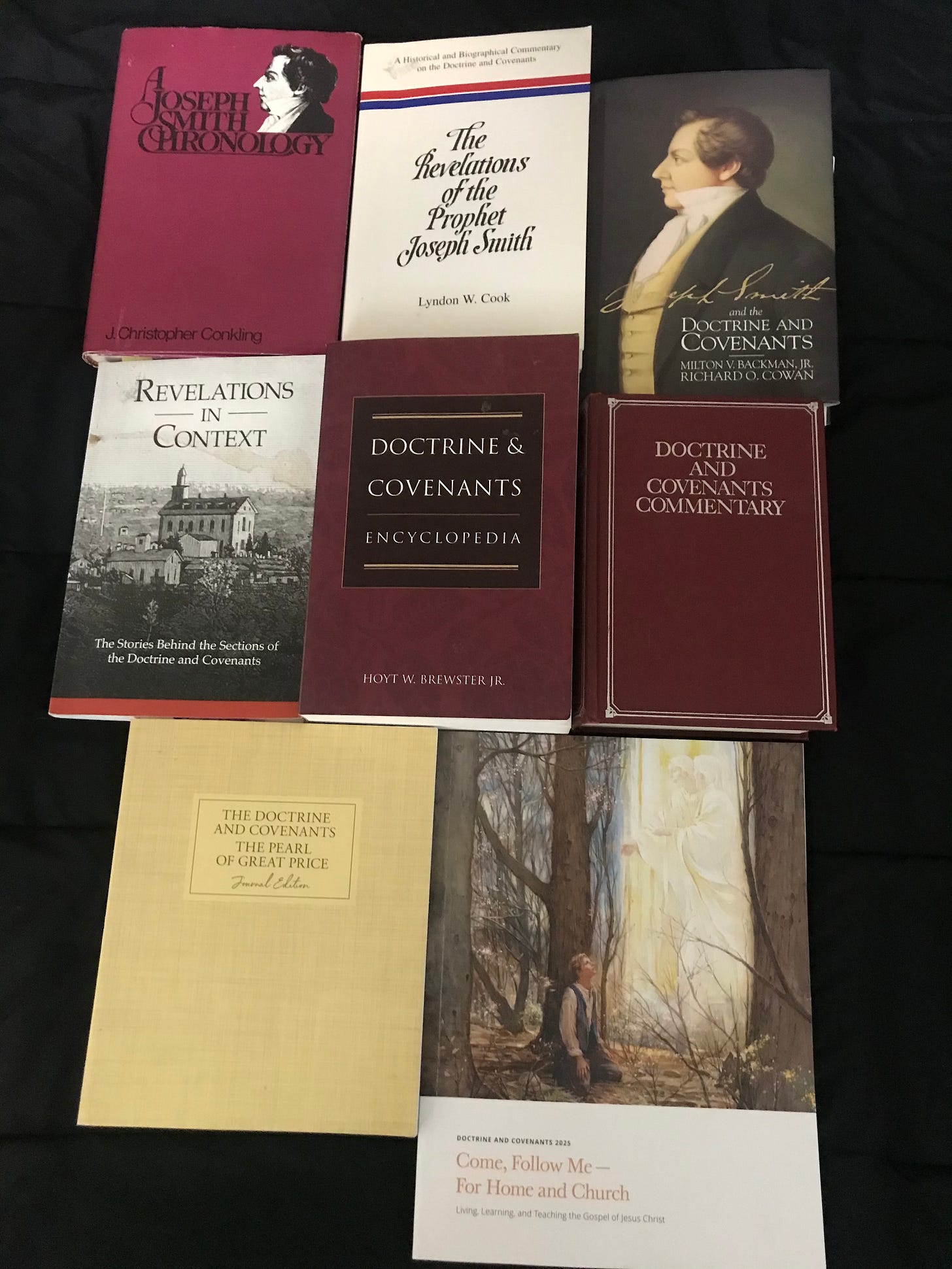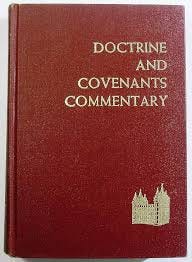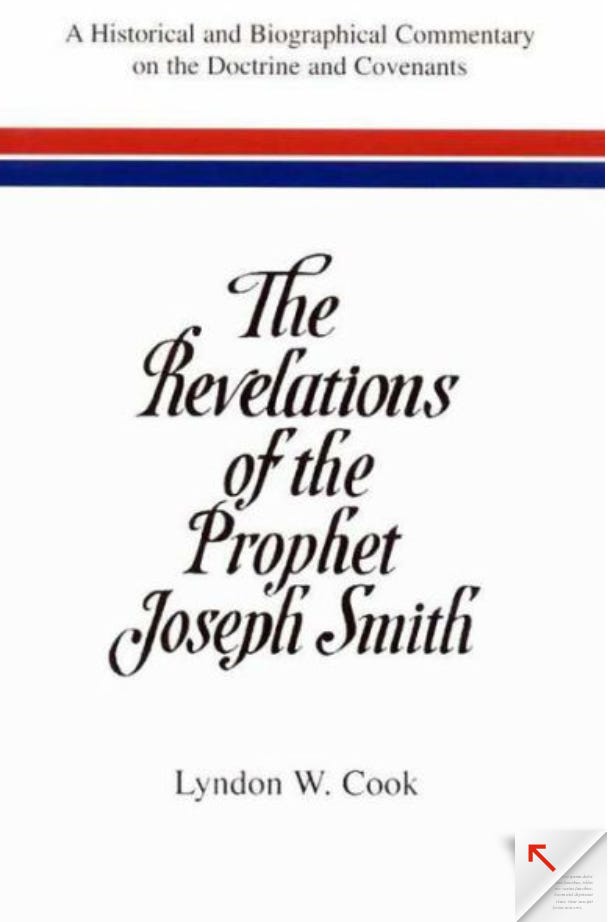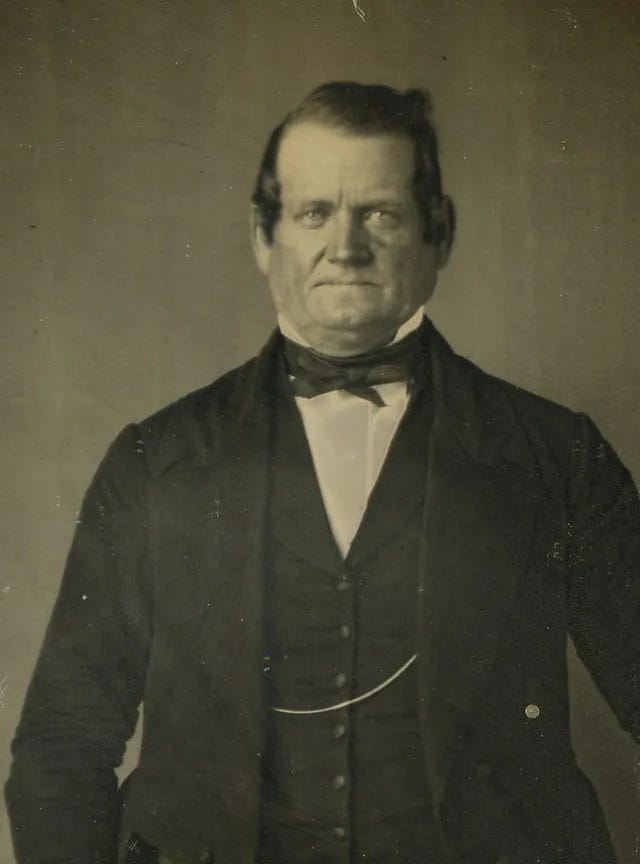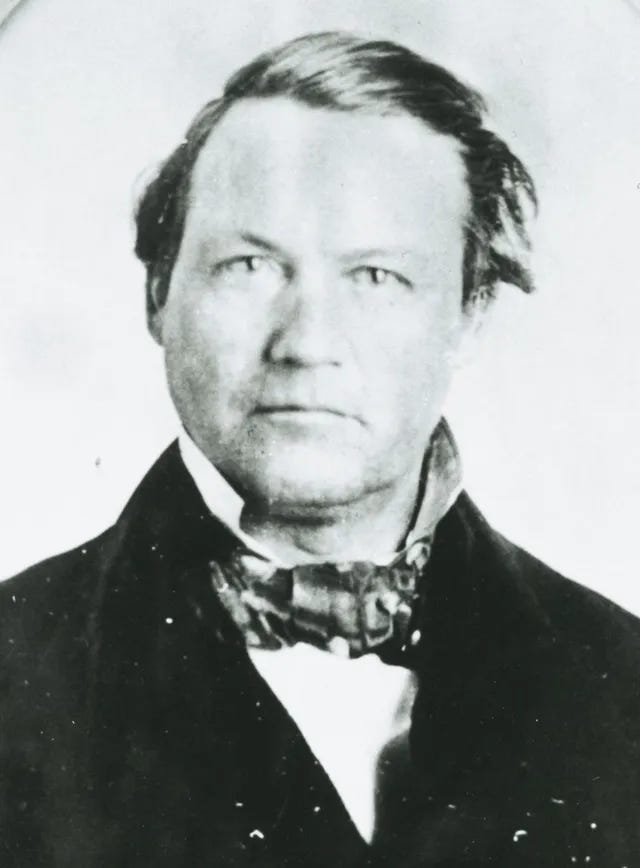Four Elders and the Duties of High Priests
Historical Background for Doctrine and Covenants Section 68
What is the historical background for Doctrine and Covenants section 68?
In their Doctrine and Covenants Commentary, Smith and Sjodahl introduce this section as follows:
Elders Orson Hyde, Luke S. Johnson, Lyman E. Johnson, and William E. McLellin being anxious to learn the will of God concerning them, the Prophet inquired and received this Revelation. It is divided into two main parts. The first (1-12) contains directions to the Elders mentioned and to all who are called to the ministry. The second (13-35) contains (a) instructions to the Bishopric; (b) on the duty of parents toward their children (25-28); (c) on the Sabbath (29-30) and (d) rebuke and commandments (31-35). (p. 409)
After his recent humiliating attempt to write a revelation himself, and after having already received a revelation from the Lord, McLellin showed remarkable resilience and courage to approach the Lord again. In his chapter “William McLellin’s Five Questions” in Revelations in Context, Matthew C. Godfrey sheds further light on the historical background for D&C 68:
Doctrine and Covenants 68
Two days later, on November 1, McLellin attended a conference of elders convened in Hiram, Ohio. Even though he had already received a revelation by Joseph providing the Lord’s will for him, McLellin joined three other men at the conference—Orson Hyde, Luke Johnson, and Lyman Johnson—in petitioning Joseph to reveal “the mind & will of the Lord” pertaining to their responsibilities.6 McLellin later recollected that when he was ordained a high priest, he “did not understand the duties of the office.”7 Perhaps that lack of understanding led in part to his request, for the revelation that followed—now Doctrine and Covenants 68—provided McLellin and his companions with information about the duties of high priests and elders to preach the gospel to all the earth.8 (p. 138)
In his book A Joseph Smith Chronology, J. Christopher Conkling shares more details on the background for D&C 68:
Mid-Nov. 1831
Shortly after D&C 1 is given, there is some question and criticism about the language in the revelations, and Joseph receives D&C 67. In it, the Lord bears witness that the revelations are from him, and challenges the wisest among the elders to write a revelation on his own to see if he can duplicate Joseph’s ability. After this revelation is received, McLellin tries to write a commandment but fails. Joseph records, “It was an awful responsibility to write in the name of the Lord.” After this episode, the faith of the elders is increased, and they draw up a testimony to Joseph’s revelations, which can be seen in D&C, p. iv. (HC 1:226.) Four elders inquire of Joseph the mind of the Lord concerning them, and he receives D&C 68. (p. 28)
In his book The Revelations of the Prophet Joseph Smith, Lyndon W. Cook shares even more details on the background for D&C 68:
Date. November 1831.
The date of reception for section 68 is uncertain. While the History of the Church indicates that the revelation came near the commencement of the Hiram Conference (1-3 November 1831), minutes in the “Far West Record” suggest that section 68, or part of it, was received on 11 November 1831. It appears that verses 1-13 were received 1-3 November, and verses 13-35 on 11 November.
The minutes of two different meetings, recorded in the “Far West Record” refer to a revelation received Friday, 11 November 1831, in Hiram, Ohio. First, 3 July 1832 eighteen high priests and elders met at the home of Edward Partridge in Independence, where it was agreed that the “mode and manner of regulating the Church of Christ take effect from this time, according to a Revelation received in Hiram Portage County Ohio Nov. 11, 1831.” A second reference to the date of section 68 is recorded in the “Far West Record” under the date 5 October 1832, again in Missouri. A group of fifteen high priests had met in Independence to conduct certain business when it was “moved by br. [William W.] Phelps that a revelation given 11th November be read.” It seems clear that the second source is referring to section 68: Matters discussed at the October 1832 meeting concerned the high priests and their responsibilities, topics contained in section 68.
Place: Hiram, Portage County, Ohio.
Historical Note. Section 68 is a composite of two or more revelations. Verses 1-12 were received by Joseph Smith at the request of Orson Hyde, Luke Johnson, Lyman Johnson, and William E. McLellan. Verses 13-35 speak of literal descendants of Aaron, high priests, and their relationship to the office of bishop.
The revelation is significant in that it established the fact that bishops must be high priests, and in cases of alleged wrong doing, they were accountable only to a “conference of high priests.” Additionally, section 68 gave the age of accountability (i.e., age eight).
It is noteworthy that the content of verses 13-35 of section 68 is similar to that of verses 59-100 of section 107, also received in November 1831.
Publication Note. Section 68 was first published in the Evening and Morning Star (October 1832) and was included as section 22 in the 1835 edition of the Doctrine and Covenants. (pp. 108-109)
Cook’s book also contains a biographical note on Orson Hyde, Luke Samuel Johnson, and Lyman Eugene Johnson.
Who were Orson Hyde, Luke Samuel Johnson, and Lyman Eugene Johnson?
Orson Hyde was born in Oxford, Connecticut, in 1805. He was baptized in Kirtland, Ohio, in October 1831 and ordained a high priest shortly thereafter. In 1832, after being called by revelation (Doctrine and Covenants 75:13), he preached in the eastern United States with Samuel Smith. Afterward, Hyde returned to Kirtland, where he participated in the School of the Prophets, was appointed clerk to Joseph Smith and his counselors, and became a member of the Kirtland high council (Doctrine and Covenants 102:3). In 1834 Hyde was appointed by revelation to recruit funds and people for the Camp of Israel expedition (Doctrine and Covenants 103:40). He participated in the Camp of Israel expedition, marching from Ohio to Missouri, later that year. The same year, he married Marinda Nancy Johnson. In 1835, Hyde was ordained a member of the Quorum of the Twelve Apostles. Between 1836 and 1838, he served missions in New York, Upper Canada, and England, after which he relocated to Far West, Missouri. He was removed from the Twelve in May 1839 but was restored to his position the following month. From 1840 to 1842, he served a mission where he preached in the eastern United States and Europe and dedicated Palestine for the gathering of the Jews. He then settled in Nauvoo, Illinois. He served another mission to Great Britain in 1846 and 1847. He migrated to Utah Territory in 1852.
References in the Doctrine and Covenants
Doctrine and Covenants 68, 75, 100, 102, 103, 112, 124
Additional Information
Biographical facts and sources, The Joseph Smith Papers
Saints, vol. 1, The Standard of Truth
Revelations In Context
(1807–61)
Luke Johnson was born in Pomfret, Vermont, in 1807. He was baptized in Hiram, Ohio, in May 1831, and later that year he was ordained as an elder and a high priest. He was called by revelation to serve a mission (Doctrine and Covenants 68:7–8; 75:9), and between 1831 and 1833, he served missions in Ohio, Pennsylvania, Virginia, and Kentucky. He married Susan Harminda Poteet in November 1833. He was appointed to the Kirtland, Ohio, high council in February 1834 (Doctrine and Covenants 102:3), and later that year he marched from Ohio to Missouri as part of the Camp of Israel. Johnson was a member of the Quorum of the Twelve Apostles from 1835 to 1837, during which time he served additional missions to the eastern United States and Upper Canada. In September 1837 he was disfellowshipped and quickly restored to fellowship. He was excommunicated for apostasy the following year. In March 1846 he was rebaptized in Nauvoo, Illinois. His first wife died in 1846, and in 1847, he married America Morgan Clark. In 1847 he migrated to Utah.
References in the Doctrine and Covenants
Doctrine and Covenants 68, 75, 102
Additional Information
Biographical facts and sources, The Joseph Smith Papers
Saints, vol. 1, The Standard of Truth
Revelations In Context
Lyman Johnson was born in Pomfret, Vermont, in 1811. He was baptized in Ohio in February 1831, and later that year he was ordained to the priesthood. Between 1832 and 1834, after being called by revelation (Doctrine and Covenants 68:7–8; 75:14), he accompanied Orson Pratt on missions to the eastern United States and Upper Canada. In 1834 Johnson marched from Ohio to Missouri as part of the Camp of Israel. He later returned to Ohio, where he married Sarah Lang (Long) in 1834 and was ordained a member of the Quorum of the Twelve Apostles in 1835. In September 1837, he was disfellowshipped and quickly restored to fellowship. He then moved from Ohio to Far West, Missouri, where he was excommunicated for apostasy in April 1838.
References in the Doctrine and Covenants
Additional Information
Biographical facts and sources, The Joseph Smith Papers
Saints, vol. 1, The Standard of Truth
Revelations In Context
This is Bruce R. McConkie’s Section Heading for D&C 68:
Revelation given through Joseph Smith the Prophet, at Hiram, Ohio, November 1, 1831, in response to prayer that the mind of the Lord be made known concerning Orson Hyde, Luke S. Johnson, Lyman E. Johnson, and William E. McLellin. Although part of this revelation was directed toward these four men, much of the content pertains to the whole Church. This revelation was expanded under Joseph Smith’s direction when it was published in the 1835 edition of the Doctrine and Covenants.
The Prophet Joseph Smith himself introduced this revelation simply and briefly:
As the following Elders - Orson Hyde, Luke Johnson, Lyman E. Johnson, and William E. McLellin - were desirous to know the mind of the Lord concerning themselves, I inquired and received the following: [Section 68, follows.] (HC 1:227, November 1831, Hiram, Ohio.) (Roy W. Doxey, Latter-day Prophets and the Doctrine & Covenants, Vol. I., p. 537)
In the following post we will examine and appreciate the revelation itself.





